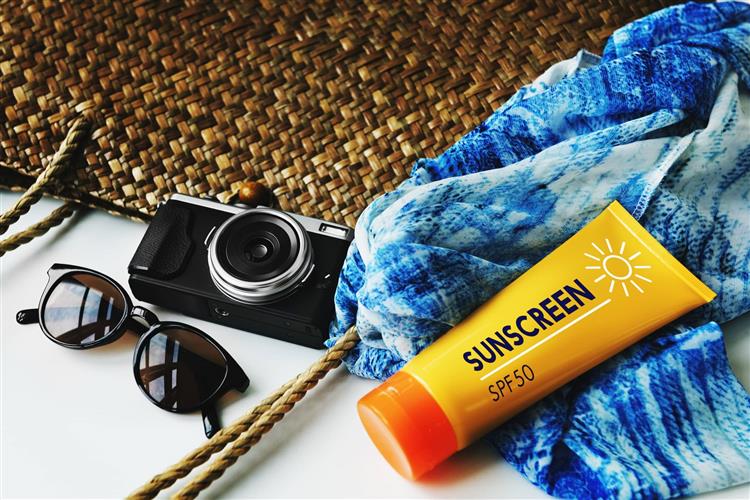
- 14 August 2024
- 1206 Views
Titanium Dioxide (TiO2) is a widely used ingredient in sunscreens due to its effectiveness in blocking harmful ultraviolet (UV) rays. As a physical or mineral sunscreen agent, it sits on the skin's surface, reflecting and scattering UV radiation. With the increasing awareness of skincare and sun protection, understanding the long-term effects of using Titanium Dioxide in sunscreens is crucial. This article delves into the potential benefits and risks associated with its prolonged use, providing a comprehensive overview for consumers.
What is Titanium Dioxide?
Titanium Dioxide is a naturally occurring mineral commonly used in various products, including paints, cosmetics, and food. In the skincare industry, it is prized for its UV filtering properties, making it a key ingredient in sunscreens. Unlike chemical sunscreens that absorb UV rays, Titanium Dioxide works by creating a physical barrier on the skin, reflecting and scattering the rays away from the body.
This mineral is available in different forms, including nanoparticles, which are used to achieve a more transparent application on the skin. While effective, the use of nanoparticles has raised concerns about potential health risks, leading to ongoing debates in the scientific community.
How Does Titanium Dioxide Work in Sunscreens?
Titanium Dioxide is classified as a broad-spectrum UV filter, meaning it protects against both UVA and UVB rays. When applied to the skin, it forms a thin layer that physically blocks and scatters UV radiation. This makes it particularly effective in preventing sunburn, premature aging, and other skin damage caused by UV exposure.
One of the advantages of Titanium Dioxide over chemical sunscreens is its stability in sunlight. Chemical sunscreens can degrade when exposed to UV light, reducing their effectiveness over time. In contrast, Titanium Dioxide remains stable, providing consistent protection throughout its use. Additionally, it is non-comedogenic, meaning it does not clog pores, making it suitable for individuals with acne-prone or sensitive skin.
Safety of Titanium Dioxide
The safety of Titanium Dioxide has been extensively studied, particularly in its use in sunscreens. Regulatory bodies such as the U.S. Food and Drug Administration (FDA) and the European Commission have deemed it safe for use in cosmetic products, including sunscreens. However, most of these assessments focus on Titanium Dioxide in its non-nanoparticle form.
Recent studies have raised concerns about the use of Titanium Dioxide nanoparticles, particularly regarding their ability to penetrate the skin and enter the bloodstream. Some research suggests that while the particles do not penetrate healthy, intact skin, there is a potential risk for individuals with damaged skin or certain skin conditions. Furthermore, inhalation of Titanium Dioxide, particularly from spray sunscreens, has been linked to respiratory issues and even carcinogenic effects in high doses.
Despite these concerns, the consensus among experts is that the benefits of using Titanium Dioxide in sunscreens outweigh the potential risks, especially when used as directed.
Potential Long-Term Effects of Titanium Dioxide
While Titanium Dioxide is generally considered safe, understanding its long-term effects is essential, especially with prolonged and repeated use. The primary concern lies with its nanoparticle form. Studies on animals have shown that inhaled Titanium Dioxide nanoparticles can accumulate in the lungs and may cause inflammation or even cancer in high concentrations.
For topical application, research is still ongoing to determine if nanoparticles can penetrate the deeper layers of the skin. Although current evidence suggests minimal penetration, the long-term impact of repeated exposure, particularly in vulnerable populations such as children and individuals with compromised skin barriers, is not yet fully understood.
In addition to potential health risks, there are environmental concerns associated with Titanium Dioxide. When washed off into the ocean, it can contribute to water pollution and harm marine life, particularly coral reefs. This has led some regions to ban or restrict sunscreens containing certain ingredients, including Titanium Dioxide, to protect marine ecosystems.
Environmental Impact of Titanium Dioxide in Sunscreens
The environmental impact of Titanium Dioxide, particularly in its nanoparticle form, is a growing concern. Studies have shown that when sunscreens are washed off into the ocean, they can contribute to the bleaching and degradation of coral reefs. Titanium Dioxide can also affect other marine organisms, disrupting ecosystems and food chains.
As a result, some countries and regions, such as Hawaii and Palau, have implemented bans or restrictions on sunscreens containing Titanium Dioxide and other harmful chemicals. These regulations aim to protect marine environments from the adverse effects of chemical pollution, prompting the development of more eco-friendly sunscreen formulations.
Are There Any Alternatives to Titanium Dioxide?
For those concerned about the potential risks associated with Titanium Dioxide, several alternatives are available. Zinc Oxide is another mineral sunscreen ingredient that provides broad-spectrum protection without the potential risks of nanoparticle penetration. It is also non-comedogenic and safe for sensitive skin.
Chemical sunscreens, which work by absorbing UV rays and converting them into heat, are also an option. However, they may cause irritation for some individuals and can degrade in sunlight, requiring more frequent application. Additionally, some chemical sunscreens contain ingredients that have been linked to hormone disruption and environmental harm.
For those seeking the best of both worlds, hybrid sunscreens that combine physical and chemical UV filters are available. These products offer broad-spectrum protection with a lighter, more aesthetically pleasing finish on the skin.
in Conclusion: Titanium Dioxide remains one of the most effective and widely used ingredients in sunscreens, offering robust protection against UV radiation. While concerns about its long-term effects, particularly in nanoparticle form, persist, current evidence suggests that it is safe for most users when used as directed. However, ongoing research and awareness are essential to fully understand the implications of prolonged exposure and to make informed choices about sun protection.
Consumers should weigh the benefits and risks, considering factors such as skin type, environmental impact, and available alternatives. By doing so, they can select sunscreens that best meet their needs while minimizing potential health and environmental risks.
FAQs
Is Titanium Dioxide safe for daily use?
Yes, Titanium Dioxide is generally safe for daily use in sunscreens, particularly in non-nanoparticle form. However, those with sensitive or damaged skin should exercise caution and consider alternatives if concerned.Can Titanium Dioxide in sunscreens cause cancer?
Current research indicates that Titanium Dioxide is not carcinogenic when applied to the skin. However, inhalation of nanoparticles, particularly from spray sunscreens, has been linked to potential respiratory risks.What are the alternatives to Titanium Dioxide in sunscreens?
Alternatives include Zinc Oxide, which offers similar broad-spectrum protection, and chemical UV filters like Avobenzone and Octocrylene, though these come with their own set of considerations regarding skin sensitivity and environmental impact.
